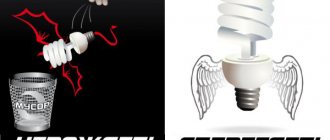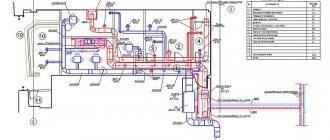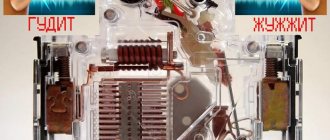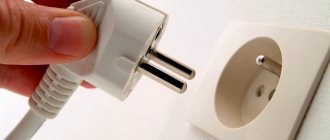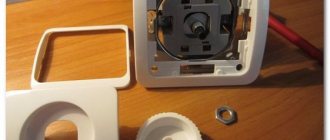Energy-saving lamps are becoming increasingly popular and are confidently replacing incandescent light bulbs. But these light sources are known to contain mercury, so they are potentially dangerous. The bulb of the lamp is filled with gaseous mercury, which glows under the influence of an electric charge. However, if it accidentally breaks, the person may be poisoned.
During operation of the lamp, since the toxic substance is not released outside. But sometimes it happens that when the device is replaced or transported, the integrity of the flask is damaged, and then toxic substances are released. Not all people know what to do if an energy-saving light bulb breaks. Such products are widely used for lighting residential premises, so everyone should know what to do if a mercury-containing lamp breaks.
Is there mercury in energy-saving lamps?
The popularity of energy-saving light bulbs is due to the fact that they consume little electricity, emit a powerful luminous flux, and last a long time. However, these devices also have their disadvantages.
Energy-saving lamps contain mercury, which is a highly toxic chemical. Inside the glass flask is filled with this metal in a gaseous state. After turning on the lamp, the passing electricity heats up the substance, which begins to glow.
After the lamp breaks, the mercury begins to evaporate and produce toxic fumes that can cause intoxication in the body. This substance disrupts the functioning of many internal organs. Vapors enter the body through the upper airways. At the same time, a person does not even smell it.
In addition, energy-saving devices contain argon without color, taste and odor; the inner surface of the flask is coated with a light-accumulating pigment (luminophor).
Attention! After damage to an energy-saving lamp, about 40% of mercury vapor evaporates from pieces of glass and fluorescent coating. The remaining substance settles on the inner surface of the flask.
However, not all energy-saving devices contain mercury; some light sources are coated with calcium amalgam (an alloy of calcium and mercury). The inside surface of the light bulb is coated with an alloy; in this form, mercury is safe, since it is chemically bound.
This is interesting! A certain amount of mercury is contained in fluorescent, sodium, metal halide lamps, etc. When creating diode light sources, substances containing mercury are not used, in addition, they do not emit ultraviolet radiation.
How to prevent mercury leakage
No one is immune from chips and cracks in energy-saving lighting fixtures. However, every user of compact fluorescent lamps should know that they should not be thrown away with other waste. Don’t be lazy to find a special collection point for such lamps, this will help save the health of millions of people.
If you are afraid that the lamp will break indoors, you can use analogues that do not contain mercury. These are gas-discharge and LED lighting devices. However, their cost will be several times higher than the cost of CFLs.
You can also choose new generation fluorescent lamps that do not contain liquid mercury. They are produced by European manufacturers; information about the absence of harmful substances is indicated on the packaging.
How much mercury can be in an energy-saving lamp?
To find out how much toxic substance your light bulb contains, just study the packaging; its composition is described there. The concentration of mercury in Russian and Chinese light sources is 3 – 5 mg. When creating European light bulbs, amalgam is used, so they are safer.
This is interesting! For comparison, a regular thermometer holds about 2.6 g of mercury, and one housekeeper holds from 1 to 5 mg of the substance. Therefore, it cannot cause serious poisoning, but it will not do without negative consequences. Moreover, mercury vapor tends to accumulate in the body, worsening a person’s condition and causing various disorders.
According to research, immediately after the integrity of the flask is compromised, more than 50% of the toxic metal it contained is released into the air. Over the course of a day, another 20% of mercury enters the atmosphere (if the fragments are not removed after the lamp breaks). Thus, after 24 hours, approximately 70% of toxic vapors (from 2.5 mg) accumulate in the room. And this is 5–10 times more than normal.
You can consider exceeding the mercury norm using the example of a room whose area is 20 square meters and the height of the walls is 3 m (total area is 60 m²). If a lamp containing 5 mg of a toxic compound bursts here, the mercury level will reach 0.083 mg/m³. This figure is more than 200 times higher than normal.
Precautionary measures
Fluorescent lamps are considered harmful when a low-quality product is purchased, as well as when used incorrectly
To prevent the negative effects of devices on the body, it is important to follow simple rules:
You should not purchase products of questionable quality. Do not use products for table lamps, bedside lamps, sconces and other devices that are located near a person. You should not use light bulbs in children's rooms, as they negatively affect the retina of the eyes, which is not yet fully formed, as well as the skin. Do not hold the lamp by the bulb while screwing or unscrewing, otherwise the seal may break. It is important to comply with the operating standards of the product. It is necessary to promptly change used devices so that flicker and ultraviolet radiation do not negatively affect the body.
Is a broken light bulb dangerous?
As mentioned earlier, the mercury in lamps that are working is not dangerous, since it is locked inside the bulb. But, if a gaseous substance enters the air through a crack in a light bulb, it is dangerous to health. Toxic vapors enter the body, causing signs of poisoning in humans:
- headache;
- drying of the oral mucosa;
- metallic taste;
- decreased appetite;
- nausea;
- sharp pain in the abdomen;
- diarrhea;
- weakness.
If a person breaks an energy-saving lamp and does not remove it immediately, the toxic substance will accumulate, causing dangerous complications. With prolonged exposure to the toxin, the risk of functional disorders of the central nervous system, liver, kidneys, lungs, gastrointestinal tract, visual apparatus, and immune system increases. High levels of mercury can cause death.
However, it should be understood that one broken light bulb does not pose any particular danger. Serious consequences (impaired motor skills, weakness of the limbs, hearing and vision disorders, paralysis) occur with prolonged exposure and accumulation of large amounts of toxin inside the body.
Advantages and disadvantages of mercury lamps
Some experts call mercury light sources technically obsolete and recommend reducing their use not only for domestic but also for industrial purposes.
However, such an opinion is somewhat premature and it is too early to write off gas-discharge lamps. After all, there are places where they perform at the highest level and provide bright, high-quality light with reasonable consumption.
Advantages of gas-discharge modules
Mercury-containing light sources have specific positive qualities that are quite rare in other lamp products.
Among them are such positions as:
- high and effective light output throughout the entire operational period - from 30 to 60 Lm per 1 Watt;
- a wide range of powers on classic types of E27/E40 sockets - from 50 W to 1000 W depending on the model;
- extended service life in a wide ambient temperature range - up to 12,000-20,000 hours;
- good frost resistance and correct operation even at low thermometer readings;
- the ability to use light sources without connecting ballasts – relevant for tungsten-mercury devices;
- compact dimensions and good body strength.
High-pressure devices demonstrate maximum efficiency in street lighting systems. They perform well in illuminating large indoor and outdoor areas.
What to do if an energy-saving light bulb breaks: eliminating the consequences
If a mercury-containing lamp breaks in an apartment, it must be cleaned of toxic substances and the materials must be disposed of. However, do not panic; one device will not cause much harm, of course, if you carry out high-quality cleaning. Also, you should not call specialists from the sanitary-epidemiological station; you can completely eliminate the consequences yourself.
To disinfect a room, you need to ventilate it, remove all occupants, and collect the remains of the lamp in a special way. In this case, you need to work with special protection so that toxic fumes do not penetrate inside. The infected area must be treated with chemical solutions. Then the broken lamp is handed over to special services.
This problem can affect everyone, since housekeepers are very popular now. Therefore, a person must know what can and cannot be done during the neutralization of a premises.
Mechanical cleaning
Few people know exactly what to do if an energy-saving lamp breaks. To avoid damage to the body from a toxic substance, you need to follow this plan:
- First you need to worry about the safety of the apartment's residents (including pets). We need to get them out of the room.
- Then you should open all the windows in the room and close the doors so that the gaseous substance does not spread throughout the house. The apartment needs to be ventilated throughout the day.
- 2 hours after ventilation, you need to collect all large fragments, carefully sweep away small ones. However, before doing this, wear clothing that covers all areas of your body. Wear rubber boots and latex gloves. To protect the respiratory tract, put a gauze bandage on your face, which must first be soaked in a soda solution.
- You need to collect the fragments in a prepared container. This can be a glass jar, which should be filled with water or a solution of potassium permanganate (2%).
- To collect glass and other parts of the lamp, use tape, a wet washcloth or rag and a piece of thick paper. Collect all the glass and metal elements, put them in a jar, cover with a lid, and wrap with a bag. Store container in a cool place away from direct sunlight. Use tape to collect the phosphor, which looks like powder.
Attention! If the lamp base remains inside the lamp, turn off the electricity and unscrew it. This element also needs to be sent to a container with a solution.
Demercurization
Next, in the room in which the mercury-containing lamp broke, you need to clean all surfaces with a special solution. This is necessary so that after the reaction of mercury and the chemicals in the solution, metal salts appear, which are then easily washed off. This process is called demercurization.
The following solutions can be used to clean the room:
- A mixture of 2 g of potassium permanganate with 1 liter of water.
- A solution of water (1 l) with iodine (100 ml).
- A mixture of 10 liters of warm water, 400 g of soda and 400 ml of concentrated soap solution. It is better to use laundry soap.
- Dissolve chlorine-containing liquids, for example Domestos, in water.
Disposal of other types
Russian legislation assigns responsibilities for the acceptance and removal of fluorescent and other mercury-containing lamps to specialized enterprises. The list and addresses of such organizations can be found on the Internet on the portal of city services of large settlements.
Here are some of them:
Specialized collection and storage points.
| City | Where to submit | Address |
| Moscow | NPP "Ekotron" | st. Dorozhnaya 3, room 16, |
| Environmental Services Plant | st. Malaya Borodinskaya, 6 | |
| Reception points total 997 addresses | Addresses can be found on the Moscow government portal | |
| Saint Petersburg | LLC "Ecological Service-St. Petersburg" | l. Rastannaya, 2, bldg. 2, letter B, room 8-N. |
| Novosibirsk | LLC "SIBRTUTE" | Taiginskaya, 3 |
| Ekaterinburg | Reception point | st. Pushkina, 9A, Ekaterinburg entrance 1, office 210 |
| Kazan | LLC "EKKom" | Adel Kutuya street, 163a, office 3 |
| Rostov-on-Don | LLC "Technoecologist" | st. Trolleybusnaya 24. Lit. In, room 812 |
- In federal cities and other large cities, municipal services have created mobile hazardous waste collection points where fluorescent, LED and other light bulbs can be returned. Such “Ecomobiles” drive and stop to collect garbage from the population in all areas according to a schedule. The traffic schedule can be viewed on the Internet portal of the city municipalities.
- Large hypermarkets such as Ikea, Leroy Merlin, Castorama, 220 Volt, construction and household shopping complexes “Domovaya”, etc., grocery stores of eco-products “Vkusvill”, etc. accept energy-saving lamps. There are machines at the entrance where you can return your used fluorescent emitter. Moreover, some retail chains, when accepting unusable devices containing mercury, offer discounts on the purchase of new ones.
What not to do
You should know what you are prohibited from doing during cleaning if an energy-saving lamp is broken:
- Do not turn on the air conditioner, mercury settles on it, then its vapors will spread, poisoning the air. For the same reason, it is prohibited to use a vacuum cleaner.
- Do not pick up the fragments with a broom, as toxic compounds will rise up along with the dust.
- Do not throw glass and metal parts of energy-saving lamps into the trash.
- Do not touch lamp residue with bare hands.
- Do not flush lamp residue down the toilet.
A broken energy-saving light bulb is a hazardous waste. Therefore, dispose of it in the manner described earlier.
Information about the dangers of mercury-containing lamps
By 2014, it is planned to abandon the use of all Ilyich lamps. This decision was made within the framework of Federal Law No. 261 “On energy saving and increasing energy efficiency.” It is associated with the country’s transition to an energy-efficient economic course.
Energy saving lamps: pros and cons
An energy-saving lamp has a number of advantages: - different colors (soft white, daylight, cool white); - long service life (from 6,000 to 25,000 hours, which is 6-25 times longer than the service life of an incandescent lamp); - emit much less heat, which allows them to be used in lamps with limited temperature levels. Among the disadvantages of compact fluorescent lamps are the following: - warm-up phase - up to 2 minutes; — there is flickering that tires the eye; — the service life of energy-saving lamps significantly depends on the mode of operation, in particular, energy-saving lamps are quite sensitive to frequent switching on and off; - content, albeit in small quantities, of mercury and phosphorus; - recycling problem; - relatively high price (90 - 500 rubles). It should be noted that every year the demand for mercury-containing lamps is growing, and accordingly, the number of lamps that have become unusable is growing. Having two big advantages in the form of energy saving and service life, we also have one big disadvantage - damaged mercury-containing lamps are dangerous to human health!
Mercury-containing fluorescent lamps include all types of fluorescent lamps: DRL lamps (mercury arc lamps), energy-saving CFLs (compact fluorescent lamps), neon, bactericidal and other lamps with mercury filling and a mercury content of at least 0.01 percent. Mercury is the most important component of energy-efficient compact fluorescent lamps (CFLs) that allows them to be efficient light sources.
Compact fluorescent lamps (CFLs) are an analogue of an office “daylight tube”, rolled into a spiral or snake. It is filled with mercury vapor, and a phosphor is applied to its walls. Mercury vapor under the influence of an electrical discharge begins to emit ultraviolet radiation. This, in turn, makes the phosphor applied to the walls of the tube glow. The classification of energy-saving lamps is determined by their component parts: base, electronic ballasts (electronic ballasts), fluorescent lamp or bulb.
For household purposes, CFLs are produced with a power of 5 to 30 watts. Unlike an incandescent lamp, a fluorescent lamp heats up much less, therefore, with the same luminous flux, it consumes about 5 times less electricity.
Mercury and mercury materials are classified as substances of the first hazard class, and a number of mercury compounds (sublimate, mercury cyanide) are classified as highly toxic substances.
Metallic mercury, its compounds, devices with mercury filling and other mercury materials, if handled improperly, are a source of increased danger due to the possibility of acute and chronic poisoning with mercury vapor, as well as mercury contamination of premises, territories, air, soil, and water. On average, a compact fluorescent lamp contains 3-5 mg of mercury (for comparison, thermometers contain 0.5-3 g), and the most advanced lamps contain 1 mg. The maximum permissible concentration of mercury in indoor air is 0.0003 mg/m3.
Part of the mercury vapor (from 1/3 to 2/3 over a service life of 1-3 years) over the operating time of the RLL is absorbed into the glass, phosphor, combines with the metal of the spiral and forms amalgams. This mercury, in addition to ceasing to participate in the formation of UV (with its subsequent conversion into light flux, which leads to a decrease in the brightness of the illumination from the RLL), also does not evaporate in the form of vapor and does not poison a person if the bulb of such a lamp breaks .
The main danger is destruction of the lamp. Damage to one lamp can increase the mercury concentration to 0.05 for several hours and poisons 6 m3 of air. The penetration of mercury into the body most often occurs through inhalation of its odorless vapors.
Impact on humans
The human body easily accumulates toxic metal, which settles in the kidneys, causing deep poisoning of vital organs, affecting the nervous system. If you stay in a room with a high concentration of mercury vapor for 3-4 days, the destructive processes will become irreversible.
Diagnosing mercury poisoning is very difficult. They are hidden under the guise of diseases of the respiratory system or nervous system. The initial symptoms of chronic mercury vapor poisoning are nonspecific and are expressed mainly in disorders of the nervous system. The victims do not connect these phenomena with the real cause – mercury poisoning and continue to work in a poisoned atmosphere. As a result, damage to the nervous system worsens to the point of loss of ability to work. The consequences of chronic mercury poisoning are difficult to treat.
In almost all cases, however, there is a fine and frequent trembling of the fingers of outstretched arms, and in many cases, trembling of the eyelids and tongue. The thyroid gland is usually enlarged, the gums bleed, and sweating is severe. One of the important diagnostic criteria is significant changes in the blood formula.
The characteristic main signs of mercury vapor poisoning are: - metallic taste in the mouth, loosening of the gums, severe salivation. Subsequently, ulcers develop on the gums, tooth loss occurs, and damage to the digestive tract and nervous system occurs; - with insignificant concentrations of mercury, slight excitability, slight trembling of body parts, and weakening of memory are observed; - in acute poisoning, intestinal activity is disrupted, vomiting occurs, lips and gums swell, cardiac activity gradually declines, the pulse becomes rare and weak, and fainting is possible. Particularly dangerous can be mercury-contaminated soil, water bodies, and buildings, which can be a source of mercury vapor release for decades.
What to do if lamps break?
If a fluorescent lamp or device containing mercury is broken in a room due to negligence, the following actions must be taken: remove people from the room; open the window and leave the room for 15 minutes, without closing the window both during and after subsequent cleaning (in hot weather it will take longer); After putting on disposable plastic or rubber gloves, carefully collect the lamp fragments using hard paper. You can use adhesive tape, a damp sponge or rag to collect small fragments and phosphor powder. To prevent the spread of mercury throughout the room, cleaning should begin from the periphery of the contaminated area and work towards the center; carry out wet cleaning of the premises using household chlorine-containing preparations (Belizna, Domestos, etc.). Wipe shoes with a damp paper towel. paper, sponges, rags, adhesive tape, paper towels used in the process of eliminating mercury contamination, which become mercury-containing waste, should be placed in a plastic bag; hand over the bag with lamp fragments and products used in the process of cleaning the premises to a specialized enterprise for recycling; Place clothing, bedding, and anything that has been exposed to lamp fragments in a plastic bag. The possibility of further operation of these products is determined after consultation with a specialized organization.
IT IS STRICTLY PROHIBITED: to use a vacuum cleaner, brush, broom; dispose of mercury-containing waste (including “burnt-out” lamps) into sewers or garbage chutes; use a washing machine and dishwasher for items in contact with mercury; store mercury-containing waste near heating or heating devices. Help with mercury vapor poisoning
First aid for poisoning with mercury vapor or ingestion of mercury salts into the body is complete rest, rinsing the mouth with a 0.25 percent solution of potassium permanganate (potassium permanganate), brushing your teeth. If a large amount of mercury leaks, you must quickly leave the dangerous place and urgently call specialists. Change clothes, take a shower, rinse your mouth.
If mercury gets into the stomach, you should rinse it with water, to a glass of which you can add 20 - 30 g of activated carbon. Then drink milk, you can take egg white beaten with water.
Call immediately to decide whether to hospitalize the victim.
Also in domestic conditions, the following substances can be used to demercurize the fight: soap-soda solution (4% soap solution in a 5% aqueous soda solution - one piece of laundry soap and 200 grams of soda dissolved in hot water at a temperature of 60 degrees in a volume of 10 l); 0.2% aqueous solution of potassium permanganate, acidified with hydrochloric acid (5 ml of acid, specific gravity 1.19 per 1 liter of potassium permanganate solution); 20% bleach solution. After the mercury removal work is completed, for your own safety, you can determine the concentration of mercury in the room (carried out by accredited laboratories).
The problem of collecting mercury-containing waste generated as a result of population activities (mercury-containing lamps, mercury-containing thermometers and blood pressure monitors) remains a serious problem.
In September 2010, Decree of the Government of the Russian Federation of September 3, 2010 N 681 “On approval of the Rules for the management of production and consumption waste in terms of lighting devices, electric lamps, improper collection, accumulation, use, disposal, transportation and disposal” came into force which may result in harm to the life and health of citizens, harm to animals, plants and the environment.”
According to current legislation, waste is the property of the person who produces it, therefore people and organizations are obliged to pay for the disposal of LL themselves.
In accordance with this resolution, the collection of used mercury-containing lamps and informing legal entities, individual entrepreneurs and individuals about the procedure for such collection is organized by local government bodies.
Handle energy-saving lamps carefully so as not to destroy or damage the lamp bulb during installation. Always hold the energy saving lamp by the base when inserting or removing it from the socket. When replacing burnt-out lamps in lamps, used mercury-containing lamps must immediately be packaged (paper, thin cardboard, individual factory packaging made of corrugated cardboard) to protect them from mechanical damage.
When accumulating and collecting waste mercury-containing lamps, it is prohibited:
- throw mercury-containing lamps into garbage containers, pour mercury into the sewer, bury it in the ground, burn containers contaminated with mercury. Accumulating in yards and ending up in solid waste landfills, mercury from garbage, as a result of the activity of microorganisms, is converted into water-soluble and much more toxic methylmercury, which contaminates the environment; — store lamps near heating or heating devices; — independently open the casings of faulty mercury lamps in order to extract mercury; - accumulate mercury-containing lamps in places that are the common property of the owners of the premises of an apartment building. Lamps that have become unusable must be disposed of without damaging them!
Organizations managing apartment buildings organize places for temporary storage (accumulation) of used mercury-containing lamps.
We ask everyone who uses fluorescent mercury-containing lamps to be extremely careful in their operation and promptly dispose of used lamps using the services of professionals! Take care of your health and the health of those around you!
REMEMBER: by recycling energy-saving lamps, you are not only taking care of your health and the health of others, but also helping nature. It takes much less energy, clean water and air to obtain mercury, glass and aluminum from waste than to produce them from primary mineral raw materials.
LED bulbs
There is a promising direction in modern lighting technology. Environmentally harmful daylight emitters can be replaced by LED lamps. They are more economical and environmentally friendly. This is a good alternative, since you can use lighting sources that do not contain harmful compounds without any fear. Even if such a light bulb breaks, it can be disposed of without harming the environment.
LED lamp
Bottom line
To summarize, we can state the fact that an energy-saving lamp has its pros and cons. The positive aspects are energy savings, long service life, fire safety due to the lack of thermal energy release. When any glass object breaks, including a toxic one, if the integrity of the body is damaged, maximum efforts must be made to minimize unpleasant consequences. In this case, many of these consequences can be avoided.
